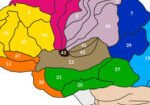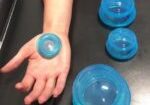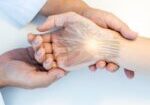Flexor tendon rehabilitation in the 21st century: A systematic review
Filed under Treatments
Neiduski, R. L. & Powell, R. K. (2019). Flexor tendon rehabilitation in the 21st century: A systematic review. Journal of Hand Therapy, 32, 165-174.
The Skinny
The objective of the study was to determine if there was evidence to support 1 type of exercise regimen. Exercise regimens reviewed include place and holds, early passive or true active. The inclusion criteria included anything published after the year 2000 and study outcomes measure had to include range of motion.
The articles were grouped into three separate categories and these included
- Early passive (which included Kleinert protocol and Duran Protocol flexor tendon repair)
- Place and holds- includes isometric hold of the involved digit in flexion (Indiana protocol flexor tendon repair)
- True Active range of motion: those who initiated early active movement within the first week
In the Weeds
Of the 241 articles identified only 9 meet the inclusion criteria and only 8 were on adults. Of the eight, 4 compared early passive motion to place and holds. These studies yielded that places and hold had better results than passive range of motion protocols.
The remaining 4 compared early active motion flexor tendon protocol with a least one other range of motion protocol. No definitive conclusions could be made.
Brining It Home
Only one of the articles clearly stated a repair strength of 4 strands should be utilized when initiating early active. Meaning if you only have a 2-strand repair, it is not safe to perform early active. It is important to review the literature on repair strength before advancing the patient. Many of the patient’s outcomes measures were all performed at the 12-week mark which does not consider those patients who may have had gapping and late rupture.
The review supported using place and holds over passive flexion protocols. This information conflicts with the work done by Dr. Lalonde showing a buckle and jerk at the edge of the pulley with performing place and holds.
No support could be drawn as to if early active was superior to place and holds.
No strong conclusions could be made based on the review as to which exercise regime yields the best outcome.
The article review is helpful in knowing that despite recommendation for early active motion we do not have high level evidence supporting its use. However, this does not consider clinical experience and expert opinion. It is believed that early active is the superior intervention based on recommendation by the American Association of Hand Surgery and the Maintenance of Certification. The literature review leaves you with several questions as to which treatment to utilize in the clinic. It is difficult to compare post-operative exercise regimes as there are many variables to account for in treating flexor tendon repairs. Treating flexor tendon injuries is truly the blending of science and art.
More To Read
Mirror therapy after a peripheral nerve repair in hand therapy
Rapid Review Paula, M. H., Barbosa, R. I., Marcolino, A. M., Elui, V. M., Rosén, B., & Fonseca, M. C. (2016). Early sensory re-education of the hand after a peripheral nerve repair based on mirror therapy: a randomized controlled trial. Brazilian journal of physical therapy, 20(1), 58–65. https://doi.org/10.1590/bjpt-rbf.2014.0130 The Skinny: Therapy is often provided following an…
Read MoreThe effects of cupping therapy as a new approach in the physiotherapeutic management of carpal tunnel syndrome
Article Review By: Rachel Reed Mohammadi, S., Roostayi, M. M., Naimi, S. S., & Baghban, A. A. (2019). The effects of cupping therapy as a new approach in the physiotherapeutic management of carpal tunnel syndrome. Physiotherapy research international : the journal for researchers and clinicians in physical therapy, 24(3), e1770. https://doi.org/10.1002/pri.1770 The Skinny: The purpose of this…
Read MorePillar Pain After Carpal Tunnel Release Surgery
Pillar Pain After Carpal Tunnel Release Surgery Carpal tunnel release (CTR) surgery is a common procedure, with the majority of patients experiencing satisfaction with its outcomes. However, for some individuals, a temporary complication known as “pillar pain” may arise, affecting approximately 13% of those undergoing CTR. Pillar pain manifests in the thenar eminence and hypothenar…
Read MoreCreating an Action Plan for Addressing Mental Health in the Clinic
Blog By: Rachel Reed As hand therapists, our care for our patients must be driven by the goal of treating the whole person, not just their hand or injury (Hannah, 2011). Occupational therapy is a unique profession in which we are equipped to view our patients through a holistic lens. With this lens, we are…
Read MoreSign-up to Get Updates Straight to Your Inbox!
Sign up with us and we will send you regular blog posts on everything hand therapy, notices every time we upload new videos and tutorials, along with handout, protocols, and other useful information.






